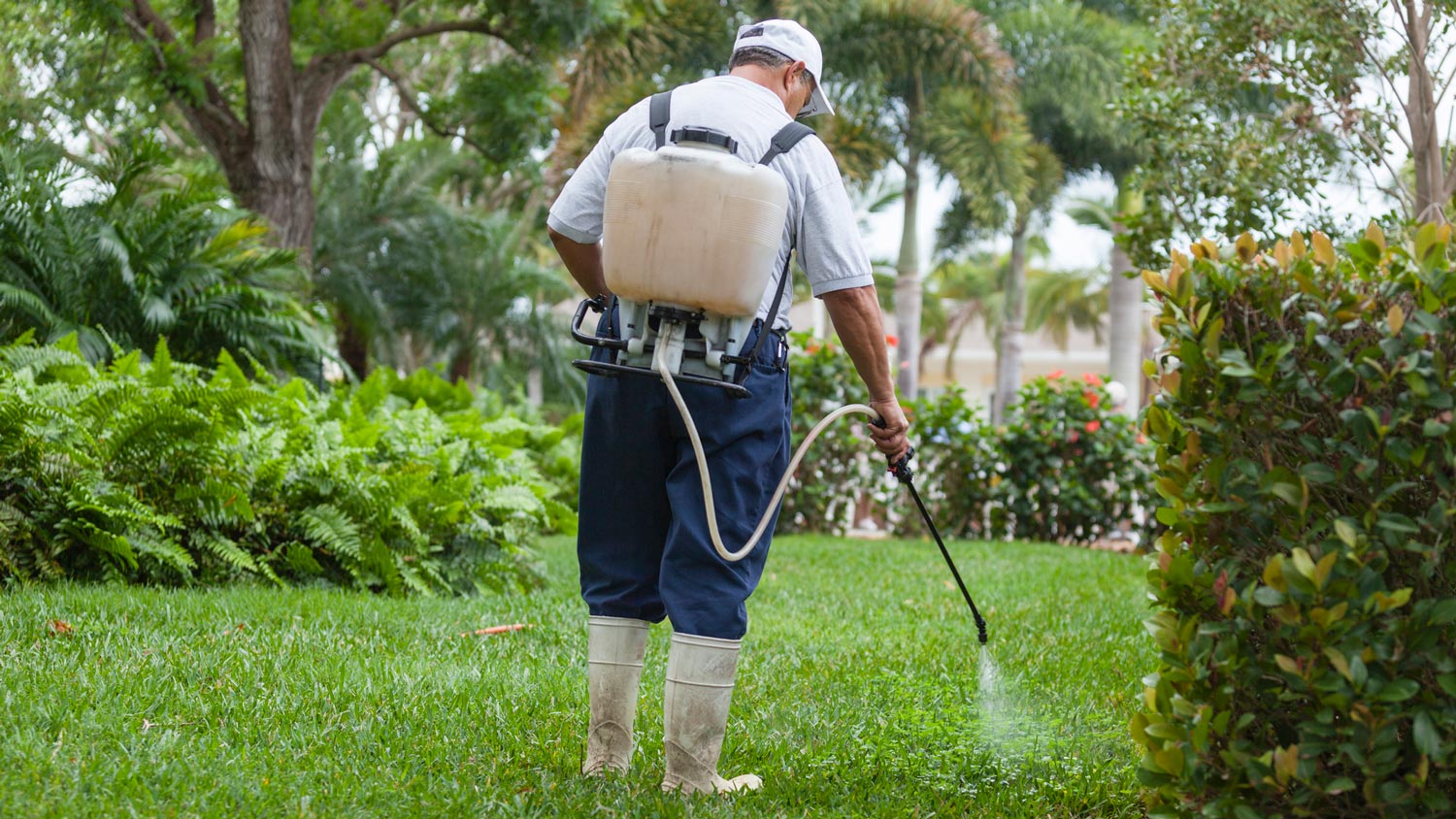6 Ways to Kill Grass On Your Lawn
If you’re done with your patchy, high-maintenance lawn, this one’s for you


There are perfectly understandable reasons for wanting to get rid of the grass on your lawn. Maybe it’s full of weeds that are impossible to control. Or you want to pull it up in order to install a low-maintenance lawn alternative. Whatever your reason, here are some ways to kill your grass.
And if you want to keep your lawn, consider this a guide for what not to do.
1. Cut the Grass Very Short
For a healthy lawn, experts recommend keeping grass over 3 inches tall. Slightly longer blades give the plant nutrition and help it manage moisture and temperature. So, if you want to kill your grass, cut it as short as your mower will go. Cut it several times, making sure to bag any clippings that would give the lawn good nutrition—this is not the time for grasscycling.
2. Spray Vinegar On the Lawn
Herbicidal vinegar, or acetic acid, is much stronger than the vinegar you use on a salad and it’s not for human consumption. Herbicidal vinegar will do a number on your lawn. So, if it’s lawn removal you’re after, give herbicidal vinegar a try. Be sure to wear the proper protective equipment and follow the instructions on the label. It might take a couple sprays and several weeks to kill all the grass.
3. Cover the Lawn
After mowing your lawn on the shortest setting, cover the lawn with a dark plastic tarp or a sheet to smother it. Letting it roast under the summer sun while starving it of rain is a surefire way to kill the grass. If you go this route, make sure to anchor your tarp down with bricks or other heavy objects so it stays in place on windy days. It could take several weeks to kill the lawn thoroughly.
4. Go the Herbicide Route

If you want the lawn gone as soon as possible, herbicide is the quickest way to kill it. Spray a product like glyphosate on the lawn while carefully following the package instructions. It might take up to two weeks for the lawn to completely die.
Glyphosate is a serious product, so take precautions. The Environmental Protection Agency has called it safe to use in residential areas only when used as indicated on the label instructions.
5. Dig Out the Lawn
Another option for getting rid of your grassy (or annoyingly weedy and patchy) lawn is to grab a shovel and dig it out. Once you’ve pulled out the grass and weeds, solarize the area. Smooth out the surface, dampen it, and then cover it in clear plastic sheets for four to six weeks. Do this in the warm summer months to warm the soil.
6. Till the Land
For a larger area, you’ll want to use a rototiller to remove the grass and weeds. A rototiller turns the soil over, giving you a fresh surface to work with. Once you’ve pulled up grass and weeds, rake up the debris and put it in yard waste. Then till it again, switching the direction.
Tilling also preps the land for a new purpose, like installing a garden.
I Killed My Grass. Now What?
If you killed your problem grass in order to start on a fresh lawn, wait until the lawn is completely dead then rake up the debris. Aerate the area if the soil is compact, and then lay a fresh layer of sod with compost to give the grass seed some nutrition.
If you had a problem with your grass before, talk to the pros at your local lawn care company, hardware store, or nursery about your needs. They can help you find a grass seed blend that works with your soil, sun exposure, and foot traffic patterns.





- 7 Tips for Keeping Your Grass Green During a Drought
- What Do You Put Down First: Grass Seed Or Fertilizer?
- How Much Does Lawn Removal Cost? [2024 Data]
- When Grass Becomes a Weed: How to Control and Get Rid of Bermuda Grass
- Best Grass For High Traffic Lawns: 6 Types to Try
- How to Kill Orchard Grass in Your Lawn and Control It for Good
- Pros and Cons of No-Mow Grass: What to Consider
- What Is Bermuda Grass? Everything You Need to Know for a Healthy, Green Lawn
- How to Keep Grass From Growing on Fence Line: Grass Maintenance 101
- When the Grass Is Greener: 10 Best Grass Types for Your Lawn










